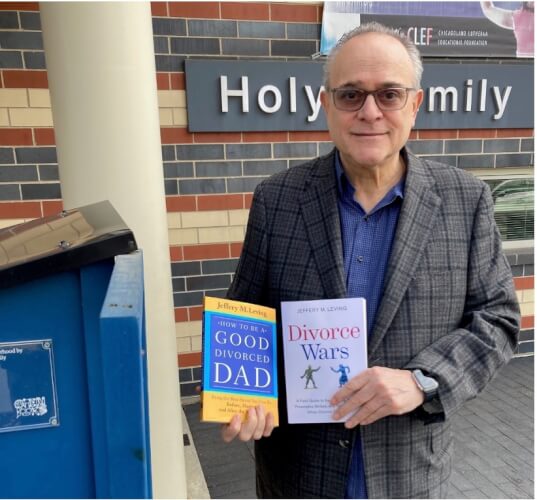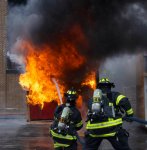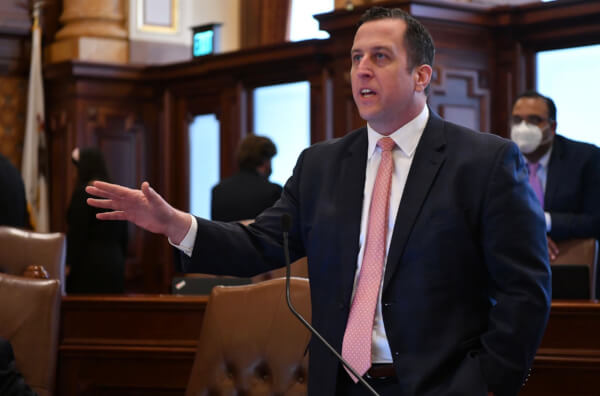Midnight Flight: Chapter 6 — Alone in the Playground
One family’s experience of White Flight and the racial transformation of Chicago’s South Side (an online novel)
By Ray Hanania
Midnight Flight, (C) 1990-2018 Ray Hanania, All Rights Reserved
“There she was just a walking down the street,
“singing do wah diddy diddy dum diddy do
“Snapping her fingers and shuffling her feet.
“singing do wah diddy diddy dum diddy do
“She looked good. She looked fine.
“And I nearly lost my mind”
“Before I knew it, she was walking next to me.”
— Do Wah Diddy Diddy, Manfred Mann, 1963
Lee Bogan was the first black student to enroll at Joseph Warren Elementary school.
I’m not sure when he actually enrolled, but I became aware of him during 8th grade in the fall of 1966. By then, three more Black students had enrolled at Joseph Warren Elementary school joining our 8th Grade class that graduated in mid-June, 1967. The official 1967 Graduation picture, taken by Calumet Studios in South Chicago, had 288 students pictured. Four where Black. There was one other Arab student besides myself and there were a handful of Hispanics who were just referred to as “Mexicans” back then.
Jane Seaberry was one of the Black students and she was in my homeroom. She was always smartly dressed. And, she was very smart.
Ironically, although many of the Black students achieved high scores and grade, White people just couldn’t link school performance with their inner-gut fear of Black people.
If you are a Black person, there is nothing you could do to make most White people feel comfortable with you. Racial fear didn’t allow it.
Lee Bogan was more open about racial issues, or at least alluding to them. The other Black girls were not. They seemed to avoid the issue, although being a boy, I didn’t have a lot of conversations with them.
Seaberry was the first Black person who had ever entered my classroom environment. And when she did, I didn’t notice any earthquake like changes. The quality of education did not fall. We didn’t leave class wanting to abandon our ambitions or enter lives of crime.
That didn’t matter. My parents asked about her. They were curious. And the parents of my friends also asked about her. They were curious, too.
The graduation ceremony was held at CVS where I recall the mother of one of my best friends, Jack Stone, coming up to my mother at the ceremony. Meeting for the first time, Jack’s mother said, “You have a wonderful son. He’s like my own son. He’s like a part of our family.”
Considering my mother was Palestinian Arab and Jack’s mother was Jewish, and that only a few days earlier the six-day Arab-Israeli war had ended, it said a lot about how friendly neighbors could be in the South Shore Valley community. Jews and Arabs did get along, once we knew each other.
Many of my friends had Black housekeepers and maids. They cooked food. Cleaned homes. Some even lived in the homes where they worked, leaving on Friday afternoons to their own families, and returning on Monday morning. We often saw Black people, but none that had so intimately invaded the privacy of our “White” World.
Even though Jane had become kind of a friend, too, I don’t recall anyone going up to her parents at graduation and saying they felt like she was one of their own.
Jane was far from what many people envisioned about Black people. She certainly did not look like someone that anyone had to run away from. She was always one of the first students to raise her hand in answer to a teacher’s question. She was at the top of the class.
Her clothes were always neatly pressed, and her hair was very fashionable.
The teachers fawned over her. Maybe it made it easier for her, a Black student entering an all-White elementary school. It couldn’t have been easy, given the times. Everyone was polite to her, during school.
Even if for a moment we could put aside the racial animosities that existed openly and quietly among White people, imagine someone who stood out from the rest trying to fit in. That alone would be difficult. Heap upon that the troubling racial factors.
In contrast, the teachers ignored a much older Mexican boy who was in our 8th Grade Class, too. His name was Arthur. He had been “held back” three times. As I understood back then, the school couldn’t expel you unless you were at least 16 years old. Arthur was ridiculed frequently by our teachers who would roll their eyes when he couldn’t complete a math problem, or when he stumbled as he read the work assignments. His handwriting was terrible and, on top of it all, he was very shy. So while he wasn’t that smart, he didn’t exhibit what some teachers looked for in other students, that “desire to learn.”
Of course, maybe the desire to learn had been snuffed out years earlier by a system that just didn’t seem to be sensitive to the needs of some minority students.
Arthur was quiet. He had dark skin. He had an accent. His black, wavy hair was greased back. He really was a gentle and kind friend, though his older, hulking figure could scare anyone in a potential confrontation out on the playground. Arthur was a great person to have around you in the event of a fight.
Underneath all the serenity of our community, there were some dividing lines that kept people apart. Unwritten rules. Things that we took for granted but never really articulated.
A lot of the non-Jews at our school hated the Jewish kids, for example. A lot of the Jewish kids hated the non-Jews. In general, they didn’t really mix, although there were many exceptions.
I hung around with both the Jewish kids and the non-Jewish kids. I would bounce back and forth between them, like I had dual loyalties or something.
In school, we were all together. Outside of school, we were apart.
Underneath the blanket of neighborhood serenity was an undercurrent of real anti-Semitism from the Christians, and elitism from the Jewish kids who seemed to sometimes display an attitude of scorn against the Christian kids.
It was strange to see all of this subtle divisiveness part ways for Jane Seaberry. I noticed that there were levels of friendship.
Girls were more likely to be friendly with the Black students. The Jewish kids, at least in school, were willing to compete with the Black students in sports. The competition was greatest in basketball because many Jewish students were as proficient at it as the Black students. The Christian boys, though, didn’t mix with the Blacks and seemed to take a tougher stand.
The students were as close to the Black students during school as they were far apart after school. It was a bizarre scene. Although Jane was in my class, I never saw her after school when I would meet with many of my friends.
Sharon Zurek and others had the same recollections.
“Lee Bogan and Michele Demby came to school at the same time, but everyone always lumped them together, as if because they were Black they liked the same things, had the same interests,” recalled Zurek. “It was like these two black kids were going to be married or something.
“I know she hated that and always complained. Lee was the same way. He hated the idea that somehow all the Black students were always lumped together.”
What made it worse, of course, was that there just weren’t that many.
Zurek became close friends with Demby during school, but it always ended when the school bell rang at the end of the day.
“Michele was a very quiet and a very tall and thin person. She was really sweet. We seemed to share a lot of interests in school,” Zurek said.
“But, for all the time I hung out with her, I really didn’t get to know her. She never came to my house. I never went to her house. We would only see each other at school, and that was it. Just at school.”
Likewise, although Jane Seaberry was in my class and we shared our education, she didn’t exist for me after school.
Jane often would stand by herself during recess, in the playground. I remember watching her. Just staring at her from a distance, feeling sorry for her. It seemed that she was always alone.
It must have been terrible for her, standing there alone in the playground while all the other kids around her were playing, laughing and enjoying games together.
When the end of recess bell sounded, we all lined up and marched back into our classrooms. Jane joined us and walked with us. The bell seemed to serve as a demarcation line between one life where we could not accept Blacks, and another, in school, where it was just a normal part of our lives. That didn’t mean that she had a lot of friends. Eventually, she did make friends, but that first half of the year must have been difficult. In school, we just viewed her as another part of what we would experience in life.
But once we got outside, Jane was pushed aside and all the kids walked off to their own lives. Oh, things did change, slightly. Eventually, during recess, she would have friends to talk with.
Jane Seaberry didn’t seem to be a part of the life that we shared outside of school. It was easy to be friends with her during school. No one really seemed to have the courage to be her friend after the school bell rang.
I don’t know where Jane and her family lived. It could have been down the street from where I lived.
Wherever she lived, her home might as well have been many miles away.
But we knew that she lived in a different world, a world that many people in our White community did not want to be a part of, but could not totally avoid in our schools.
When school ended, her existence ended, too, although Jane Seaberry and the other Black students continued to exist in the minds of most White parents.
Midnight Flight
Chapter 3: A Beautiful, Idyllic Community
Chapter 4: Written Long Before
Chapter 6: Alone in the Playground
Chapter 8: In the Eye of the Storm
Chapter 10: The Sub-Urban Life
Chapter 11: Friends Left Behind
Chapter 13: Notes from Readers
- WHY ENGLAND SLEPT releases “House of Pizza” - April 26, 2024
- Leving team frees duped dad from paying child support for another man’s child - April 26, 2024
- Fire damages Al Bahaar Restaurant in Orland Park - April 23, 2024


























